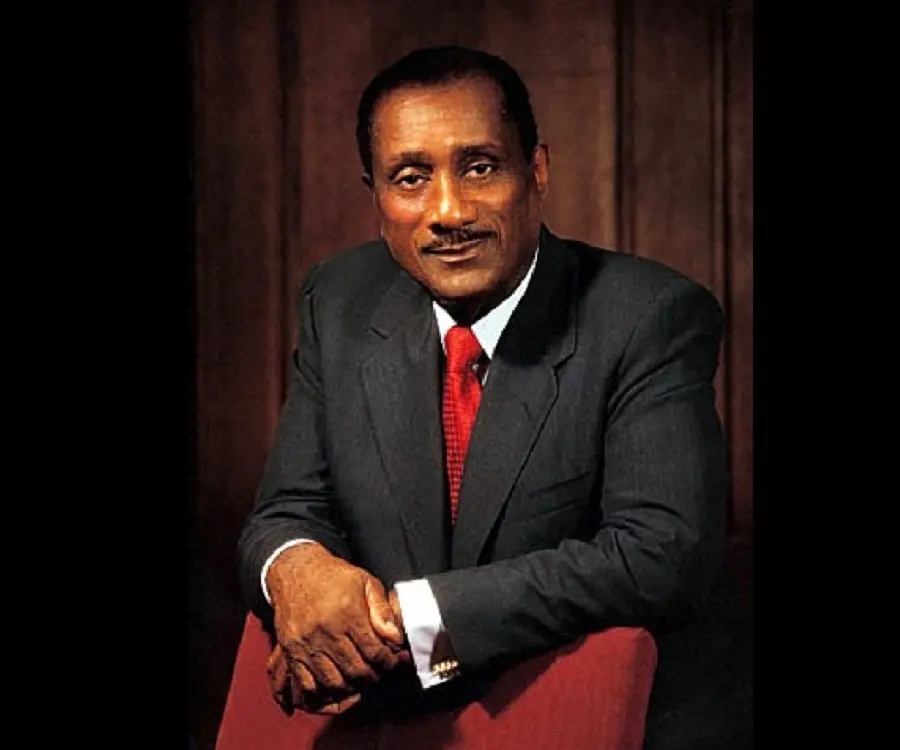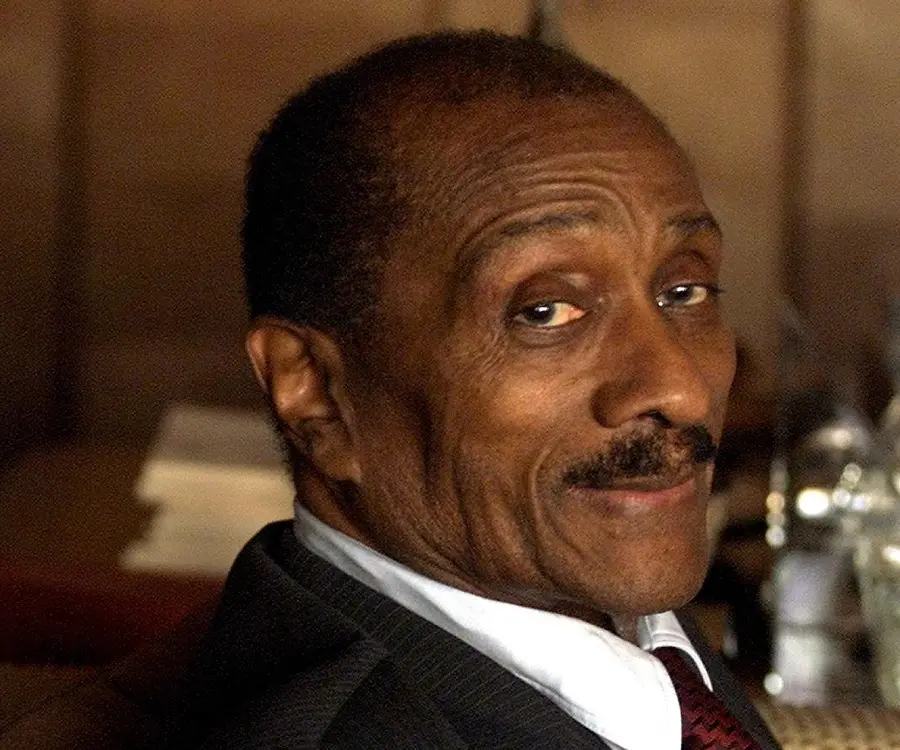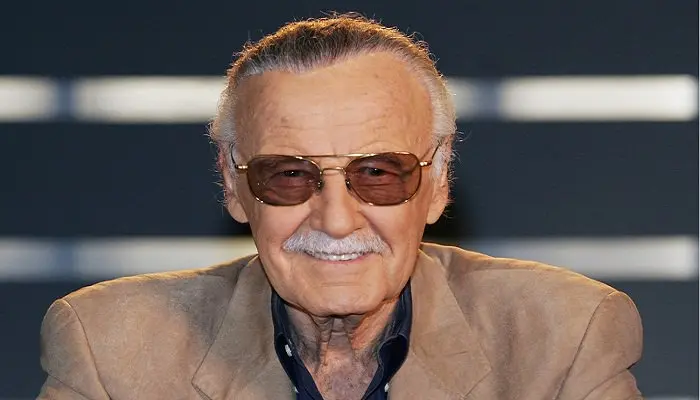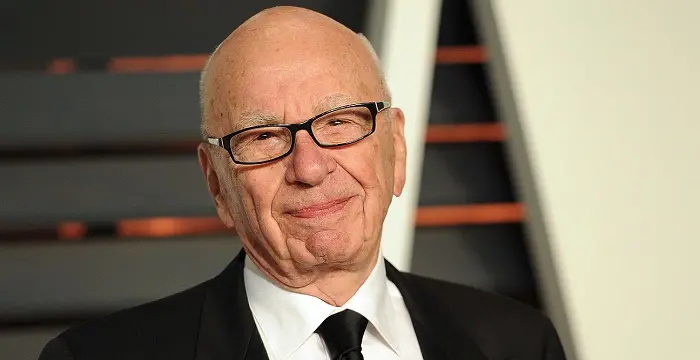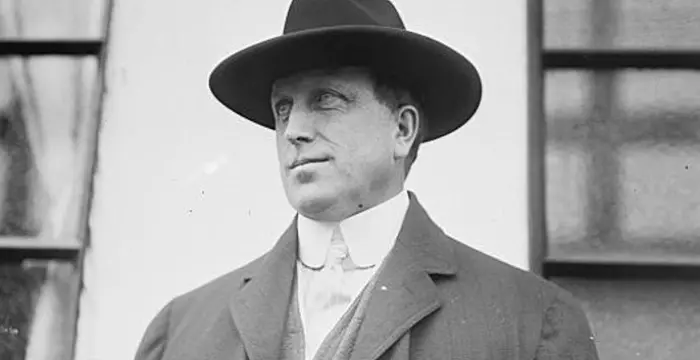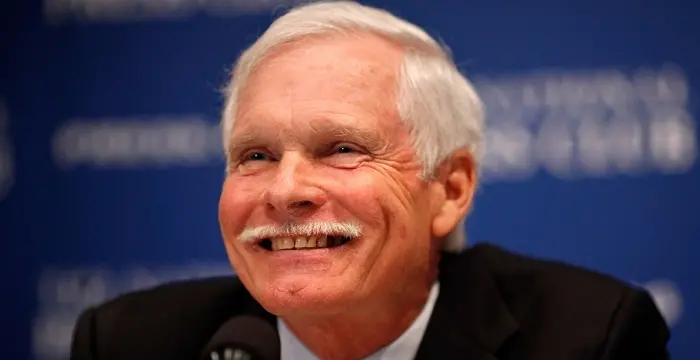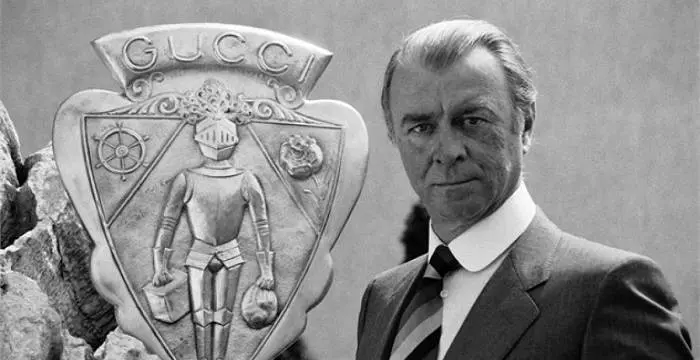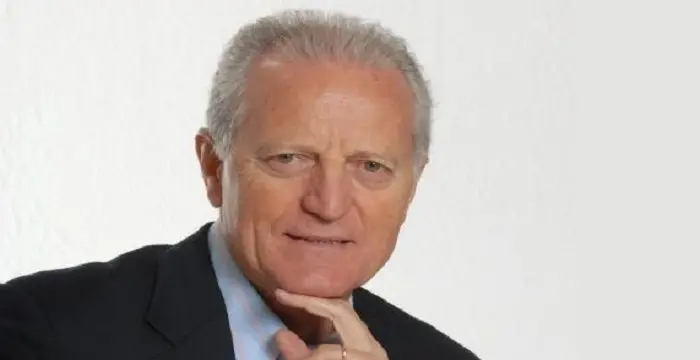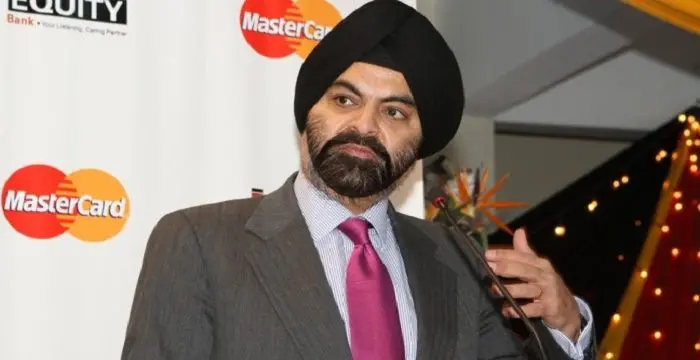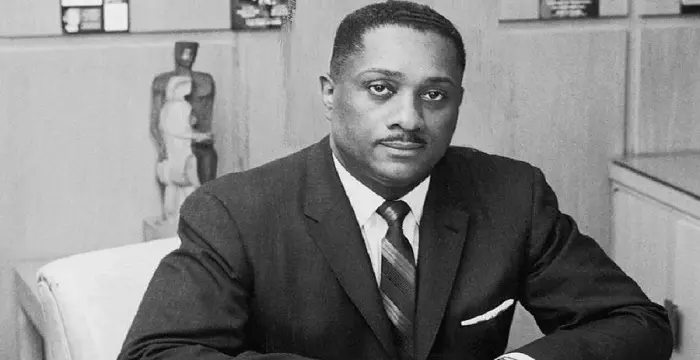
John H. Johnson - Entrepreneurs, Birthday and Life
John H. Johnson's Personal Details
Founder of the Johnson publishing company, John H
| Information | Detail |
|---|---|
| Birthday | January 19, 1918 |
| Died on | August 8, 2005 |
| Nationality | American |
| Famous | Business People, Media Personalities, Publishers, Entrepreneurs |
| City/State | Arkansas |
| Spouses | Eunice W. Johnson (m. 1941–2005) |
| Known as | John Harold Johnson |
| Childrens | John Harold Johnson, Linda Johnson Rice |
| Universities |
|
| Founder / Co-Founder |
|
| Birth Place | Arkansas City, Arkansas, United States |
| Gender | Male |
| Net Worth | $150 million as of Feb 17,2017 |
| Sun Sign | Capricorn |
| Born in | Arkansas City, Arkansas, United States |
| Famous as | Publisher, Entrepreneur |
| Died at Age | 87 |
// Famous Entrepreneurs
Kristina Sunshine Jung
Kristina Sunshine Jung is an American entrepreneur and actor, better known as the daughter of drug-smuggler George Jung and his ex-wife, Mirtha Jung.
Brittany Matthews
Brittany Matthews is an American fitness trainer. She is the girlfriend of professional NFL player, Patrick Mahomes II. Check out this biography to know about her birthday, childhood, family life, achievements and fun facts about her.
Gabe Newell
Gabe Newell is an American computer programmer and businessman, best known as the co-founder of ‘Valve Corporation.’ This biography provides detailed information about his childhood, family, personal life, career, etc.
John H. Johnson's photo
Who is John H. Johnson?
John Harold Johnson was an African-American businessman and publisher, who founded the Johnson Publishing Company. Losing his father at the age of six, he was brought up by his mother and his stepfather, first in Arkansas City and then in Chicago. Having to struggle from an early childhood, he promised himself that he would one day become successful in life. True to his word, he launched ‘Negro Digest’—a popular African-American magazine—at the age of 24, without the advantage of any bank loan or advertisement. Using a marketing technique that nobody had thought of before, he earned enough to be able to launch his second publication ‘Ebony’ within three years. Thereafter, he launched ‘Jet’, slowly diverting into cosmetics, radio stations, book publishing and television production. While building his empire, he also created a generation of photographers, advertisers, marketers, and circulation specialists from the African-American community, bringing out their hidden potential. By 1982, he was wealthy enough to become the first African-American to appear on the Forbes 400 list.
// Famous Publishers
Stan Lee
Stan Lee was a former president and chairman of Marvel Comics. This biography profiles his childhood, life, career, works, achievements and timeline
Rupert Murdoch
Rupert Murdoch is a renowned Australian business magnate famous for his establishment, ‘News Corporation’ in the US. Read on for detailed information about his childhood, profile, career and timeline
William Randolph Hearst
William Randolph Hearst was an American newspaper publisher. Read this biography to learn more about his childhood, profile, life and timeline.
Childhood & Early Years
John Harold Johnson was born on January 19, 1918 as Johnny Johnson in Arkansas City, USA. His father, Leroy Johnson, son of a slave, died in a sawmill accident when Johnny was six years old. Thereafter, he was raised by his mother, Gertrude Johnson, who worked as a camp cook.
His father’s death forced Johnson to start working from an early age. In an interview to Jim Hoskins, author of ‘Black Stars: African-American Entrepreneurs’, he had later said, "I was a working child. I learned how to work before I learned how to play."
Despite hardship, his mother was fully aware of the importance of education. Therefore, she insisted that Johnson attend school, enrolling him into an elementary school, meant for black students. Meanwhile in 1927, she married James Williams, who later became a dominant force in Johnson’s life.
The school he attended was only up to eighth grade. Since there was no high school for blacks in the racially segregated Arkansas, Gertrude decided to move to the north, which offered better prospect for the blacks. Therefore, she concentrated on earning more while Johnson repeated his eighth grade.
In 1933, Johnson and his mother traveled to Chicago, visiting the World Trade Fair being held there. The city was then considered a Mecca for the emigrating blacks and seeing the opportunity, Gertrude decided to stay back. His stepfather, James William, also joined them at Chicago.
Unfortunately, it was the middle of the Great Depression. While Johnson started going to Wendell Phillips High School, his mother and stepfather started looking for jobs; but without success. Ultimately, they very reluctantly applied for welfare.
Neither Johnson nor his mother cherished living under welfare, which was granted for two years. Sometime now, Johnson moved from Wendell Philips to DuSable High School. In both these schools, he studied with middle-class Blacks, having to suffer taunts not only for his tattered clothes, but also for his country-ways.
Fuelled by the taunts he had to endure, Johnson made up his mind to establish himself. He therefore began to study self-improvement books at night. All his efforts paid off when he was elected class president, distinguishing himself for his leadership quality.
He also flourished as the editor of the school newspaper and manager of the class yearbook. Later, he joined the French Club and became the president of the student council. Simultaneously, he secured a job with the National Youth Administration, a New Deal project.
In 1936, Johnson graduated with honors, receiving a $200 tuition scholarship to the University of Chicago. However, not being able to figure out how he would meet other expenses, he planned to give it up. But fate willed otherwise.
Soon after the graduation ceremony, Johnson and some other students were invited to a dinner by the National Urban League, a civil rights organization based in New York. There Johnson was asked to give a speech. Harry H. Pace, President of Supreme Liberty Life Insurance Company (SLL), was one the invitees.
Pace was so impressed by Johnson’s speech that he offered him a job so that he could utilize his $200 scholarship and continue his study. Accordingly Johnson began his career as a part-time office boy at SLL on September 1, 1936, concurrently continuing his studies at the University of Chicago.
Early Career
Initially John H. Johnson’s job was to read all the available periodicals, selecting articles that might interest SLL’s clientele, mostly belonging to the African-American community. Pace would then review those articles and have them printed at the company’s monthly magazine, ‘The Guardian’.
Gradually, he became closer to Pace, utilizing the opportunity to learn business techniques from him. In 1939, as he was promoted to the post of the editor of ‘The Guardian’, he dropped out of college to work fulltime at SLL, preferring to learn on the job.
Founding Negro Digest
While working as the editor, it occurred to Johnson that the African-Americans might enjoy an exclusive magazine, catering only to their needs. He then decided to create an African-American version of ‘Readers Digest’, tentatively calling it ‘Negro Digest’.
He first approached Chicago’s First National Bank for a business loan. But the loan officers told him straightaway that no institution would ever loan money to any African-American. When he approached the established African-Americans, they too discouraged him. Only three people stood by him at this juncture.
Apart from his wife, the first person to support him was his mother, a woman with deep religious conviction and undying faith in her son. She agreed to let him use her furniture as collateral for a loan, amounting to $500.
Pace also helped him by granting him access to the mailing list of his company’s 2000 policyholders. Johnson wrote to them asking for $2 subscription, generating $6,000 solely from SLL policyholders. His wife helped in mailing chores, later participating in editorial and circulation.
In 1942, Johnson opened his ‘Negro Digest Publishing Company’, running his office from a corner of the law library, located inside the SLL building. The first issue of 5000 copies appeared in November 1942.
Johnson mailed 3000 copies of his first issue to his prepaid customers and contacted a well-known distributer for the rest. He was told that African-American reading materials did not sell and so newsstand owners would not keep them.
Johnson now asked his friends at SLL to go around the newsstands, asking for ‘Negro Digest’. Thinking there was a demand for it, they began to keep the journal in their stand. Johnson then gave his friends money to buy all the copies, which he sold back to the distributer.
Buoyed by the success, Johnson next used the same strategy in other cities. However, in the south he had to use different techniques, having to sell his journal in buses, parks and cotton fields. Within eight months, the circulation of the magazine reached 50,000.
While the African-Americans featured in white publications only when they were involved in criminal activities, Johnson took care to publish positive news about the community, covering African-American history, literature, arts, and culture. He also started a special feature ‘If I Were a Negro’, written by many well-known white writers.
In September 1943, Johnson resigned from SLL. Meanwhile, he had persuaded First Lady Eleanor Roosevelt to contribute to the column ‘If I Were a Negro’ and when it was published in the October 1943 issue, the circulation reached 150,000. Also in the same year, he bought his own building.
Founding Ebony
The news in ‘Negro Digest’ was published in digest form. Johnson soon realized that readers also wanted to ‘see’ the news and many were subscribing to magazines like ‘Life’ and ‘Look’. Out of this realization was born ‘Ebony’, which his wife told him was a fine black African wood.
The first issue was published in November 1945. It was a success from the very beginning and when the first 25,000 copies sold out in first few hours, he had another 25,000 copies printed.
Initially, he had to go without advertisements, having to depend solely on subscriptions. But by 1946, it began to carry advertisements, not only from SLL, but also from white giants, such as Armour Foods, Quaker Oats, Chesterfield, Elgin Watch and Zenith.
Sometime in late 1950s, John H. Johnson invited Martin Luther King Jr. to write a column in Ebony, thus providing him a national platform, through which he was able to garner support for his movement. Later, it started reserving certain portion for articles relating to African independence movements in each issue.
Later Career
In 1949, Johnson renamed Negro Digest Publishing Company as Johnson Publishing Company and moved its headquarters to Calumet. Subsequently, he established another magazines, ‘Tan’, a ‘true-confession’ type of magazine.
In 1951, he started a weekly news digest, ‘Jet’. Initially called ‘The Weekly Negro News Magazine’, it became nationally famous in 1955 with the coverage of Emmett Till’s lynching. Later it continued to cover the Civil Right Movement, including the Montgomery bus boycott and murder of Martin Luther King Jr.
He also started ‘African American Stars’ and ‘Ebony Jr.’, the latTer being an exclusive magazine for children. In 1958, he moved to a new direction, creating ‘Ebony Fashion Fair’. Its success led him to develop a line of cosmetics, which would be launched in 1973.
In 1970, he changed the name of ‘Negro Digest’ ito ‘Black World’. Later in 1973, he started ‘Fashion Fair Cosmetics’. Subsequently, he bought three radio stations, launched a book publishing company, and started a television production company. By the early 1980s, he had become one of the richest business leaders of the land.
Major Works
John H. Johnson is best remembered for creating ‘Ebony’, a journal that is being continuously published since 1945. With the aim of portraying the African-American community in a positive light, it initially emphasized on the achievements of successful African-Americans, but later included all other issues important to African-American community.
Ebony also hired professional historians to document the community’s contribution to the history of the United States. It also portrayed the African-American culture positively and used African-American models in their advertisements. Thus it helped to develop the awareness in the Black population when lynching was a common occurrence.
Awards & Achievements
In 1951, John H. Johnson was selected as Young Man of the Year by the United States Chamber of Commerce. He was the first African-American to receive such honor.
In 1966, he received Spingarn Medal by the National Association for the Advancement of Colored People for his contributions in the area of race relations.
In 1989, he received a Candace Award for Distinguished Service from the National Coalition of 100 Black Women.
In 1995, Johnson received the Communication Award on the occasion of Ebony magazine's 50th anniversary.
In 1996, he received Presidential Medal of Freedom from President Bill Clinton.
He also received honorary doctorate from at least thirty-one institutions, among which are Howard University, Northwestern University, Howard University, University of South California, Carnegie Mellon Institute etc.
Personal Life & Legacy
In 1940, Johnson met his would-be wife, Eunice Walker, a postgraduate student at Loyola University, Chicago. They got married on June 21, 1941. Eunice later became Secretary-Treasurer and Director of Ebony Fashion Fair.
They adopted two children, Linda Johnson and John Harold Johnson Jr. In 1981, 25 year old John died from sickle-cell anemia. Linda grew up to become President and Chief Executive Officer of Johnson Publishing Company while her father remained the Chairman.
In his later years Johnson also served on the board of directors of several major business houses such as Greyhound Corporation, Dillard's Inc., First Commercial Bank, Little Rock, Dial Corporation, Zenith Radio Corporation, and Chrysler Corporation.
He was also involved in international diplomacy, traveling to Africa and Russia in 1950s with Vice President, Richard Nixon. With Robert Kennedy, he went to Ivory Coast, subsequently serving as a special ambassador to the Independence Ceremonies of Ivory Coast and Kenya in the 1960s
John H. Johnson died on August 8, 2005 from heart failure and was buried at Oakwood Cemetery in Chicago’s South Side. His funeral was attended by more than 1,000 people, which included future U.S. President Barack Obama, activist Al Sharpton and politician Carol Moseley Braun.
In January 2012, the U.S. Postal Service released a first-class stamp featuring Johnson as part of its Black Heritage series.
Institutes like John H. Johnson Cultural & Educational Museum and John H. Johnson Cultural & Entrepreneurial Center in Arkansas City and John H. Johnson School of Communication in Howard University continue to carry his legacy.
// Famous Media Personalities
Wanda Nara
Wanda Nara is an Argentine model, reality personality, and football agent, more famous as the wife of Argentine football player Mauro Icardi.
Melinda Farrell
Melinda Farrell is an internationally renowned sports anchor and freelance sports reporter. This biography profiles her childhood, life, career, achievements, and some facts.
Art Bell
Art Bell was an American broadcaster and author, known as ‘The King of Late Night Radio.’ Check out this biography to know more about his childhood, family, personal life, career, etc.
John H. Johnson's awards
| Year | Name | Award |
|---|---|---|
Other | ||
| 0 | 1996 - Presidential Medal of Freedom | |
| 0 | 2001 - Horatio Alger Award | |
| 0 | 1995 - Communication Award | |
| 0 | - Wall Street Journal Dow Jones Entrepreneurial Excellence Award | |
John H. Johnson biography timelines
- // 19th Jan 1918John Harold Johnson was born on January 19, 1918 as Johnny Johnson in Arkansas City, USA. His father, Leroy Johnson, son of a slave, died in a sawmill accident when Johnny was six years old. Thereafter, he was raised by his mother, Gertrude Johnson, who worked as a camp cook.
- // 1927Despite hardship, his mother was fully aware of the importance of education. Therefore, she insisted that Johnson attend school, enrolling him into an elementary school, meant for black students. Meanwhile in 1927, she married James Williams, who later became a dominant force in Johnson’s life.
- // 1933In 1933, Johnson and his mother traveled to Chicago, visiting the World Trade Fair being held there. The city was then considered a Mecca for the emigrating blacks and seeing the opportunity, Gertrude decided to stay back. His stepfather, James William, also joined them at Chicago.
- // 1936In 1936, Johnson graduated with honors, receiving a $200 tuition scholarship to the University of Chicago. However, not being able to figure out how he would meet other expenses, he planned to give it up. But fate willed otherwise.
- // 1st Sep 1936Pace was so impressed by Johnson’s speech that he offered him a job so that he could utilize his $200 scholarship and continue his study. Accordingly Johnson began his career as a part-time office boy at SLL on September 1, 1936, concurrently continuing his studies at the University of Chicago.
- // 1939Gradually, he became closer to Pace, utilizing the opportunity to learn business techniques from him. In 1939, as he was promoted to the post of the editor of ‘The Guardian’, he dropped out of college to work fulltime at SLL, preferring to learn on the job.
- // 1940 To 21st Jun 1941In 1940, Johnson met his would-be wife, Eunice Walker, a postgraduate student at Loyola University, Chicago. They got married on June 21, 1941. Eunice later became Secretary-Treasurer and Director of Ebony Fashion Fair.
- // 1942 To Nov 1942In 1942, Johnson opened his ‘Negro Digest Publishing Company’, running his office from a corner of the law library, located inside the SLL building. The first issue of 5000 copies appeared in November 1942.
- // Sep 1943 To Oct 1943In September 1943, Johnson resigned from SLL. Meanwhile, he had persuaded First Lady Eleanor Roosevelt to contribute to the column ‘If I Were a Negro’ and when it was published in the October 1943 issue, the circulation reached 150,000. Also in the same year, he bought his own building.
- // 1945John H. Johnson is best remembered for creating ‘Ebony’, a journal that is being continuously published since 1945. With the aim of portraying the African-American community in a positive light, it initially emphasized on the achievements of successful African-Americans, but later included all other issues important to African-American community.
- // Nov 1945The first issue was published in November 1945. It was a success from the very beginning and when the first 25,000 copies sold out in first few hours, he had another 25,000 copies printed.
- // 1946Initially, he had to go without advertisements, having to depend solely on subscriptions. But by 1946, it began to carry advertisements, not only from SLL, but also from white giants, such as Armour Foods, Quaker Oats, Chesterfield, Elgin Watch and Zenith.
- // 1949In 1949, Johnson renamed Negro Digest Publishing Company as Johnson Publishing Company and moved its headquarters to Calumet. Subsequently, he established another magazines, ‘Tan’, a ‘true-confession’ type of magazine.
- // 1951 To 1955In 1951, he started a weekly news digest, ‘Jet’. Initially called ‘The Weekly Negro News Magazine’, it became nationally famous in 1955 with the coverage of Emmett Till’s lynching. Later it continued to cover the Civil Right Movement, including the Montgomery bus boycott and murder of Martin Luther King Jr.
- // 1951In 1951, John H. Johnson was selected as Young Man of the Year by the United States Chamber of Commerce. He was the first African-American to receive such honor.
- // 1958 To 1973He also started ‘African American Stars’ and ‘Ebony Jr.’, the latTer being an exclusive magazine for children. In 1958, he moved to a new direction, creating ‘Ebony Fashion Fair’. Its success led him to develop a line of cosmetics, which would be launched in 1973.
- // 1966In 1966, he received Spingarn Medal by the National Association for the Advancement of Colored People for his contributions in the area of race relations.
- // 1970 To 1973In 1970, he changed the name of ‘Negro Digest’ ito ‘Black World’. Later in 1973, he started ‘Fashion Fair Cosmetics’. Subsequently, he bought three radio stations, launched a book publishing company, and started a television production company. By the early 1980s, he had become one of the richest business leaders of the land.
- // 1981They adopted two children, Linda Johnson and John Harold Johnson Jr. In 1981, 25 year old John died from sickle-cell anemia. Linda grew up to become President and Chief Executive Officer of Johnson Publishing Company while her father remained the Chairman.
- // 1989In 1989, he received a Candace Award for Distinguished Service from the National Coalition of 100 Black Women.
- // 1995In 1995, Johnson received the Communication Award on the occasion of Ebony magazine's 50th anniversary.
- // 1996In 1996, he received Presidential Medal of Freedom from President Bill Clinton.
- // 2000Pace also helped him by granting him access to the mailing list of his company’s 2000 policyholders. Johnson wrote to them asking for $2 subscription, generating $6,000 solely from SLL policyholders. His wife helped in mailing chores, later participating in editorial and circulation.
- // 8th Aug 2005John H. Johnson died on August 8, 2005 from heart failure and was buried at Oakwood Cemetery in Chicago’s South Side. His funeral was attended by more than 1,000 people, which included future U.S. President Barack Obama, activist Al Sharpton and politician Carol Moseley Braun.
- // Jan 2012In January 2012, the U.S. Postal Service released a first-class stamp featuring Johnson as part of its Black Heritage series.
// Famous Business People
Kristina Sunshine Jung
Kristina Sunshine Jung is an American entrepreneur and actor, better known as the daughter of drug-smuggler George Jung and his ex-wife, Mirtha Jung.
Ted Turner
Ted Turner is a media tycoon who founded the cable news network CNN. This biography of Ted Turner provides detailed information about his childhood, life, achievements, works & timeline.
Guccio Gucci
Guccio Gucci was a famous fashion designer from Florence, Italy, and the founder of the world-renowned fashion brand ‘Gucci.’ Check out this biography to know about his childhood, family, personal life, career, etc.
Jawed Karim
Jawed Karim is a German-American internet entrepreneur, technologist and co-founder of the video-sharing website, YouTube. Check out this biography to know about his childhood, family, personal life, achievements, age, etc.
Santo Versace
Santo Domenico Versace is an Italian businessman and politician. Check out this biography to know about his birthday, childhood, family life, achievements, and fun facts about him.
Ajaypal Banga
Ajaypal Banga is an Indian-American business executive who is the CEO of MasterCard. Check out this biography to know about his childhood, family life, achievements and fun facts about him.
John H. Johnson's FAQ
What is John H. Johnson birthday?
John H. Johnson was born at 1918-01-19
When was John H. Johnson died?
John H. Johnson was died at 2005-08-08
Where was John H. Johnson died?
John H. Johnson was died in Chicago, Illinois, USA
Which age was John H. Johnson died?
John H. Johnson was died at age 87
Where is John H. Johnson's birth place?
John H. Johnson was born in Arkansas City, Arkansas, United States
What is John H. Johnson nationalities?
John H. Johnson's nationalities is American
Who is John H. Johnson spouses?
John H. Johnson's spouses is Eunice W. Johnson (m. 1941–2005)
Who is John H. Johnson childrens?
John H. Johnson's childrens is John Harold Johnson, Linda Johnson Rice
What was John H. Johnson universities?
John H. Johnson studied at Northwestern University, University of Chicago, DuSable High School
Which company or organization was founded by John H. Johnson?
John H. Johnson was the founder/co-founder of Johnson Publishing Company
What is John H. Johnson's sun sign?
John H. Johnson is Capricorn
How famous is John H. Johnson?
John H. Johnson is famouse as Publisher, Entrepreneur




